How does Kalanchoe reproduce?
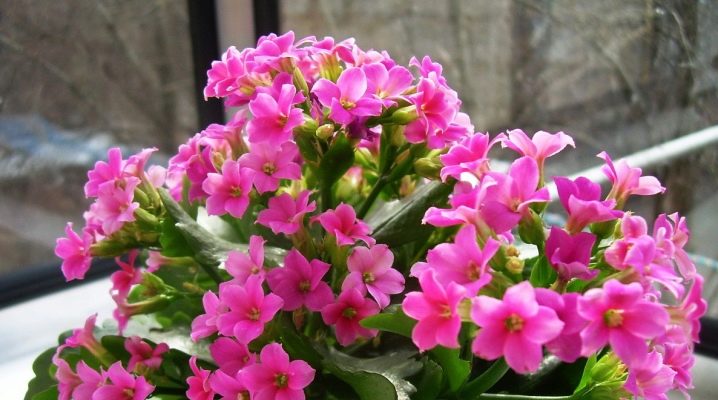
Kalanchoe is a beautiful and easy-to-care indoor flower, which is why it is so fond of many flower growers. Propagating a plant at home is also not difficult if you follow all the basic recommendations. This article will discuss how the Kalanchoe reproduces and what difficulties may arise in this process.
Preparation
Many types of house flowers are recommended to be propagated in the spring. However, this rule is not necessary for the Kalanchoe.
The plant adapts easily after vegetative propagation at any time of the year.
As for seed breeding, then for this method, the beginning of spring will be the most suitable time.
Before proceeding with the reproduction of Kalanchoe, you must choose the appropriate method. In this case, you need to focus on the plant variety. The Kalanchoe does not need any special preparation before transplanting, provided that the plant is properly cared for and does not get sick.
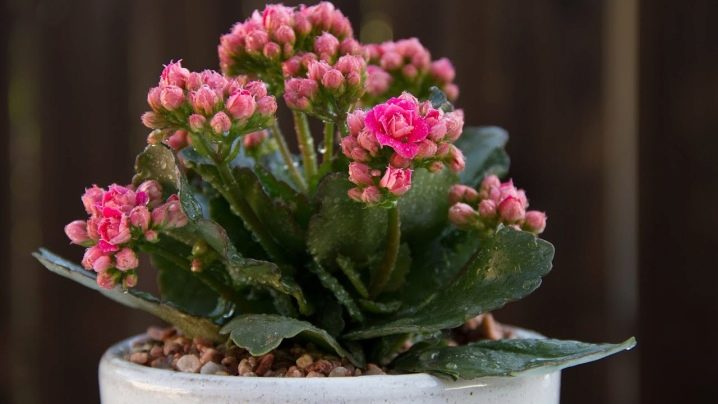
Reproduction methods
As noted earlier, Kalanchoe can be propagated in several ways at once. It is necessary to choose the right one depending on the characteristics of the variety. Let's consider all breeding methods in more detail.
Seeds
For the cultivation of Kalanchoe seeds, such types of flowers as feathery and felt are most suitable. Also, this type of propagation is used when a large number of plants are required to be raised.
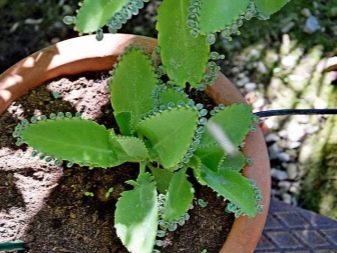
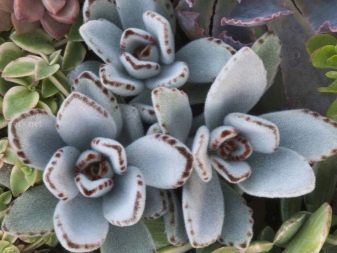
Consider the process of seed propagation step by step.
- First of all, you need to prepare a container for sowing and soil. The soil should be with the addition of sand. You can take a ready-made store-bought substrate for flowering plants and add 25% of a sand mixture to it. For planting seeds, it is best to use a rectangular wide shape.
- A drainage layer is laid out on the bottom of the container, onto which the prepared substrate is poured.
- It is recommended to lightly crush the primer and spray it with water using a spray bottle.
- The seeds are placed not deep into the soil, but on its surface. It is best to spread the seed in neat rows, about 5 centimeters apart. It is recommended that an interval of 10 millimeters be observed between seeds.
- After the seed has been spread over the entire surface of the soil, it must be lightly pressed into the soil. This can be done with your hands or with a spoon. In this case, you need to ensure that the seeds are not completely submerged in the ground.
- Next, you need to cover the container with seeds with transparent glass or film. The covered container is removed in a well-lit and warm place. However, it must be ensured that direct sunlight does not fall on the surface of the glass or film.
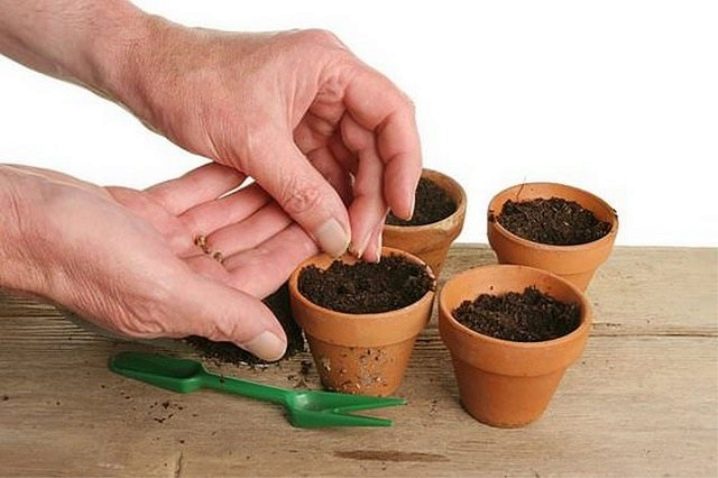
After sowing, it is necessary to maintain optimal conditions for growing Kalanchoe. Indoor temperature should not fall below 20 degrees. Until the first shoots appear, the container with the seed will need regular ventilation, which will allow you to get rid of excess moisture accumulated under the film or glass.
Also required periodically spray the seeds with warm water from a spray bottle. The first shoots appear approximately seven days after planting the seed, after which the glass or film must be removed and the container left open. A couple of weeks later, when the sprouts have at least 4 leaves, they are planted in different pots.
The scion containers should not be too wide or deep. Otherwise, only the root system will grow, and the plant itself will stop growing. Two months later, after the flower is well rooted, pinching will be required. This procedure allows you to form a beautiful neat bush. Repeated pinching is repeated after another two months.
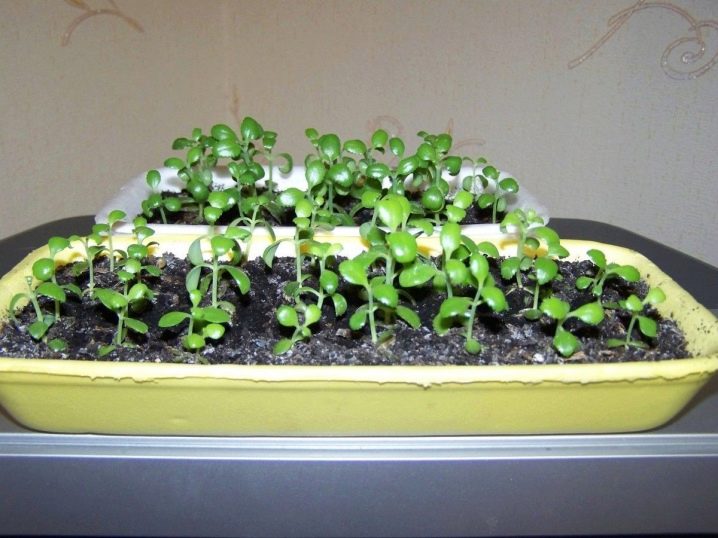
Sheet
You can also breed Kalanchoe by rooting a leaf. All types of flowers with dense, fleshy leaves are suitable for this breeding method. The convenience of this method is that You can even plant a flowering plant with a leaf.
Only intact healthy leaves can be used for breeding. They must be carefully cut from the bush and planted in a previously prepared container with a moistened substrate. It is recommended to dry the cut site well before planting. As for the composition of the soil, it is best to use a mixture of deciduous humus, peat and sand.
You can also purchase a general purpose soil from the store and mix it with river sand in a one-to-one ratio. The leaf can be planted both vertically, there and place it horizontally on the ground and sprinkle the cut. The sheet can be covered with a glass jar on top, but this is not required. The main thing is to place the pot in a well-lit place.
For this method of breeding, you can also use leaves fallen from the branches. It is important that the plates are not damaged or dry. The fallen leaf is best placed not in the ground, but in a container with water before the formation of the first root shoots. You can also cut a whole leaf into several pieces and root them.
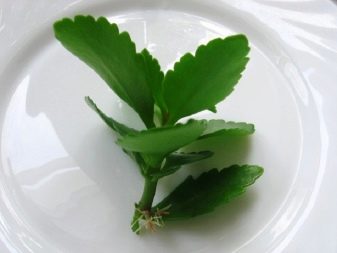

Cuttings
Cutting is considered a universal method of propagation of Kalanchoe, as it is suitable for almost all plant species. Therefore, cultivation by cuttings is used more often than other methods. Usually, cuttings are used for propagation, remaining after pruning the plant or cut off during transplantation. However, you can cut the stem at any time you need it.
It is desirable that the length of the cut off branch is at least 8 centimeters.
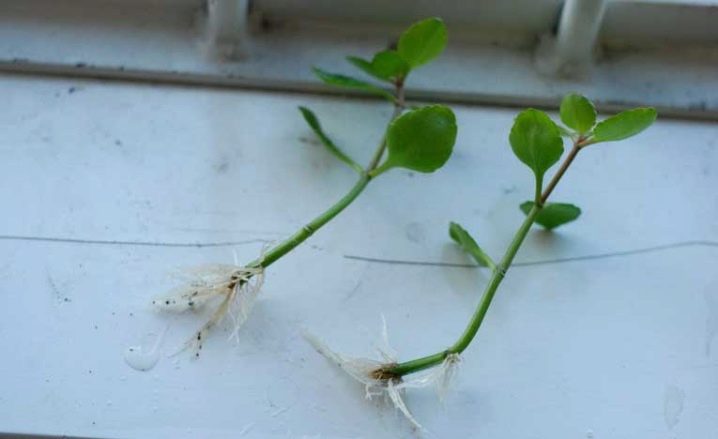
The lower leaves that are close to the cut are recommended to be removed. Next, the cutting should be left at room temperature for a couple of hours. This is necessary in order for the cut site to dry well.
Plant a branch in a small clay or plastic pot. As for the soil, then here the same composition is used as for planting Kalanchoe leaves. The stalk does not need to be planted right away - it can be placed in water until the roots appear.
The pot with the handle should be placed in a well-lit place. At the same time, the air temperature in the room should be in the range of 20-25 degrees Celsius. The root system grows and strengthens for about one month. This method of reproduction is convenient because in a short time a full-fledged plant is formed, which will bloom six months after planting the cuttings.
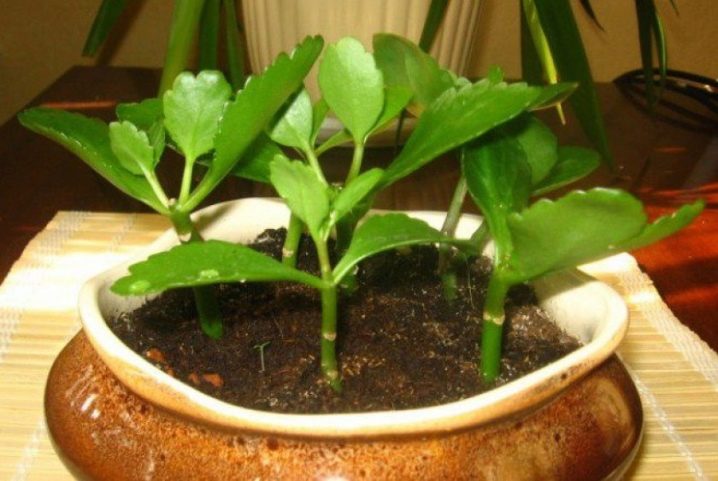
Children
Children are called brood leaf buds, which are far from all Kalanchoe species. Such plant varieties can be propagated in this way, such as Degremona, pinnate and tube-colored. Babies form on the leaves of a flower and are small plants with small roots.
In adult flowers, leaf buds separate independently after formation. They can take root on their own next to the Kalanchoe. After the babies grow a little, they can be transplanted into separate containers. However, it is not necessary to wait for the buds to fall from the flower by themselves - they can be carefully separated by yourself.
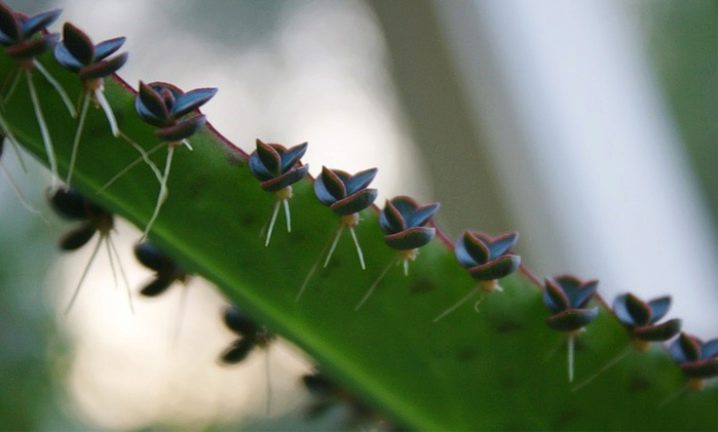
Offspring
Only one type of plant reproduces by offspring - Kalanchoe Blossfeld. The offspring usually grow after pruning the bush. You can "provoke" their appearance and growth by pinching the tops of the shoots.
The offspring grow next to the Kalanchoe bush. It is recommended to separate them after they reach the height of one third of the "parent" flower. The offspring are transplanted into separate pots, where they quickly take root and actively grow.
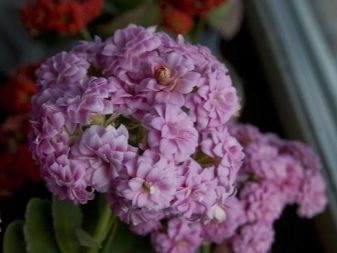
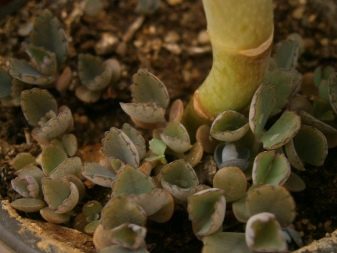
Axillary kidneys
In some varieties of Kalanchoe, after the flowering period, the leaves partially fall off. In place of the leaves, buds are formed, which are visually similar to cabbage heads in miniature form.
You need to wait, until the processes are at least two centimeters long, after which they can be cut off. They are seated in separate pots in a pre-prepared substrate.
The soil should be high in sand.

Follow-up care
Whichever method of reproduction of Kalanchoe is used, a new plant for some time after planting will need especially careful care. This is primarily due to the phase of flower acclimatization. When caring for a plant, you must adhere to the following recommendations.
- Watering Kalanchoe needs to be treated with extreme caution. The plant does not tolerate excess moisture and can rot. Therefore, it is better to moisten the flower weaker than required, rather than pouring water into the ground.
- To keep a flower in the house, you also need to monitor the temperature regime. The air temperature should not fall below 20 degrees Celsius.
- Kalanchoe is a light-loving plant, so it must be placed in a well-lit place. However, exposure to direct sunlight should be avoided.
- The flower needs periodic ventilation of the room in which it is located. However, prolonged exposure of the plant to cold air and strong drafts should be avoided.
- Do not forget about the introduction of fertilizers. You can use special formulations for succulents. After planting the Kalanchoe, it is recommended to wait until the flower grows stronger, and only after that start feeding.
- After the plant blooms, it is recommended to prune the branches. This is necessary for crown formation and to prevent overgrowth of the stems.
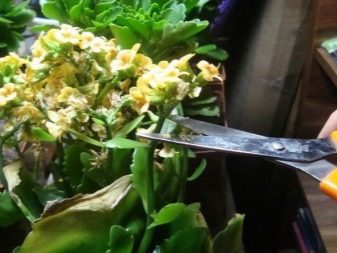

Possible problems
Despite the fact that it is not so difficult to propagate Kalanchoe, in the process of this some problems may arise, which are often associated with florist errors. They can be performed both in the process of flower reproduction and in further care.
Sometimes, after transplanting leaves and cuttings, they do not develop, but begin to die. Most often this is due to the decay of the cut, in the place of which the root system should have formed. The reason for this is the poor drying of the sections before planting. The situation can be corrected if the area of rot is relatively small - it is removed, and the new cut is dried and the cutting or leaf is planted again. Sometimes flower growers choose the wrong soil for the succulent, which will further hinder its active growth and development.
The mixture should not contain a lot of peat and be too dense.
If the flower is growing slowly or has stopped developing altogether, it is recommended transplant into a suitable substrate.
Failure to comply with the recommended conditions for keeping Kalanchoe can lead to disease and death of the plant. The flower needs to provide a good level of illumination, as well as observe the temperature regime. As for fertilizers, then the condition of the flower is affected by both their lack and excess. Also it is not advisable to fertilize Kalanchoe in winter.
For information on how to propagate a Kalanchoe with a leaf, see the next video.





















































The comment was sent successfully.